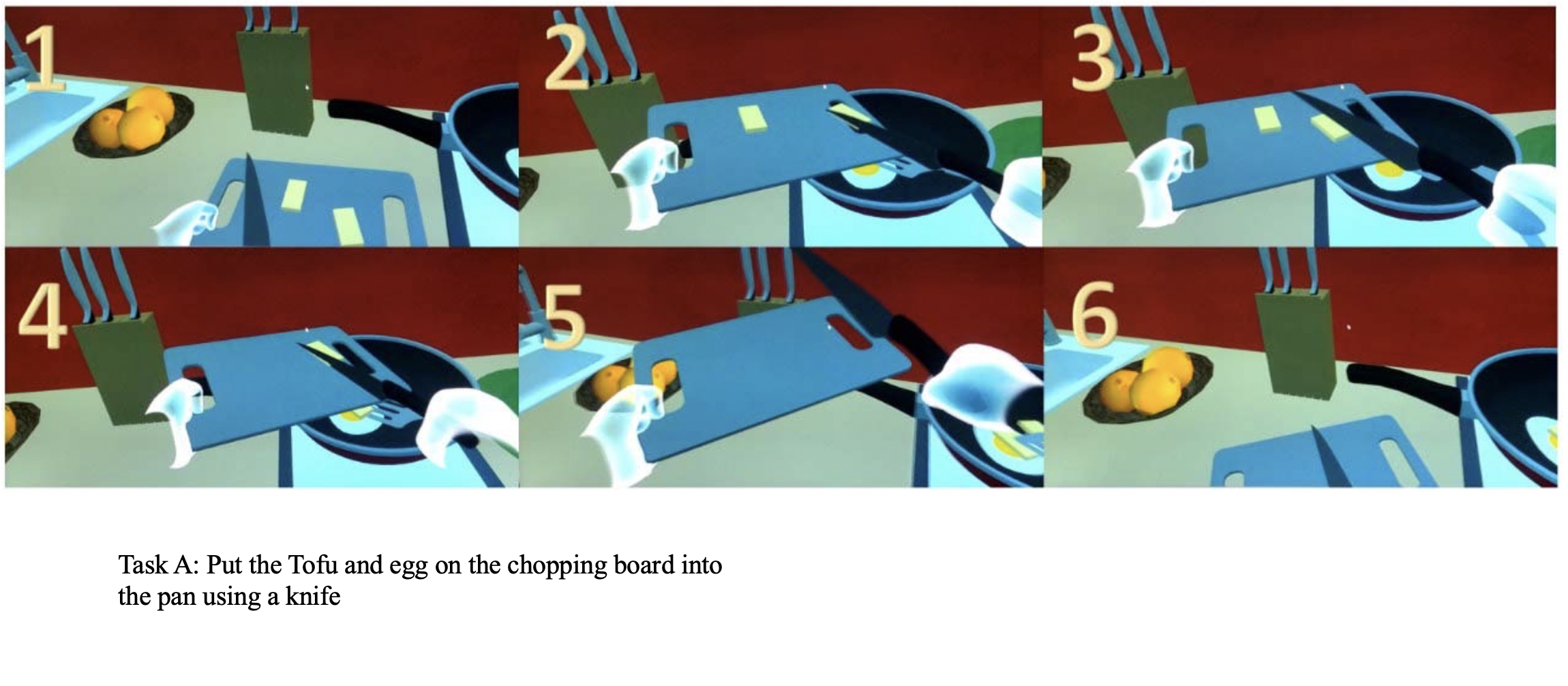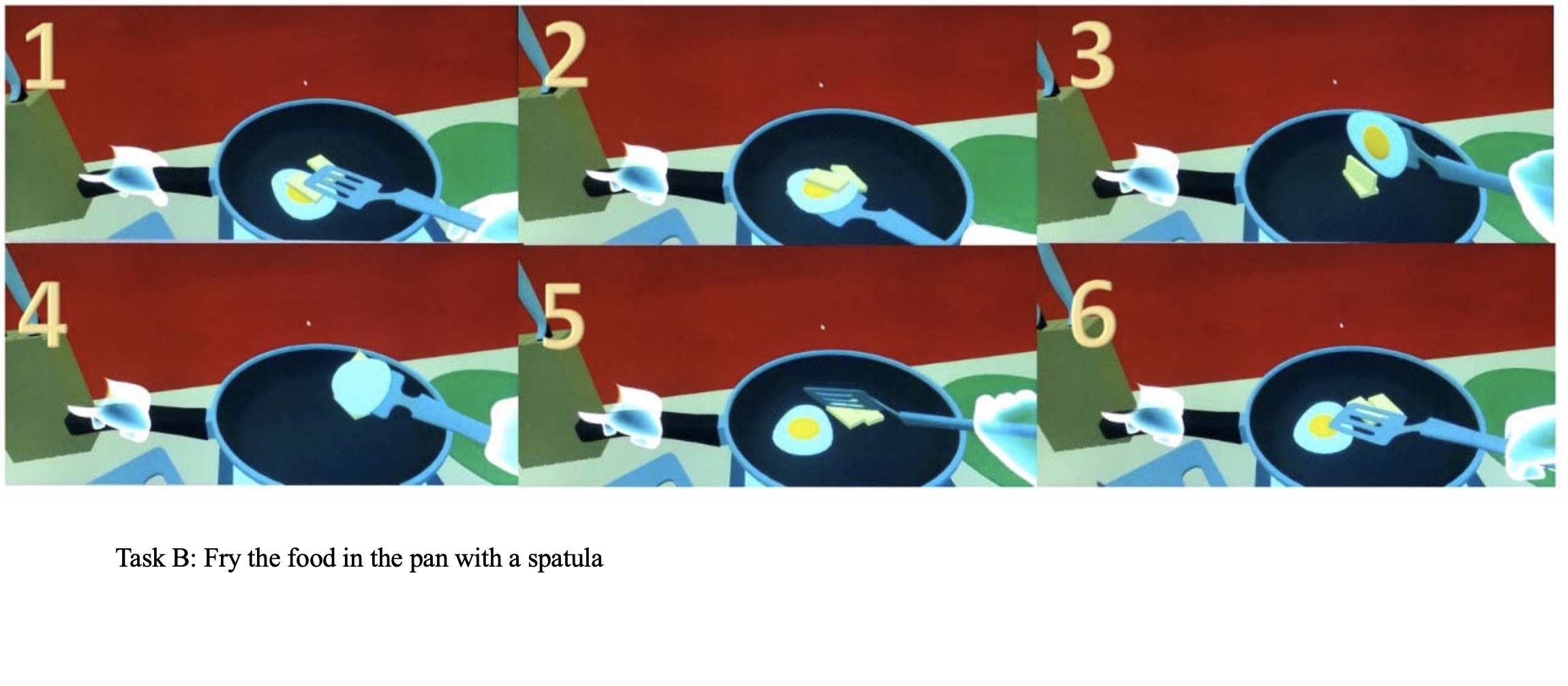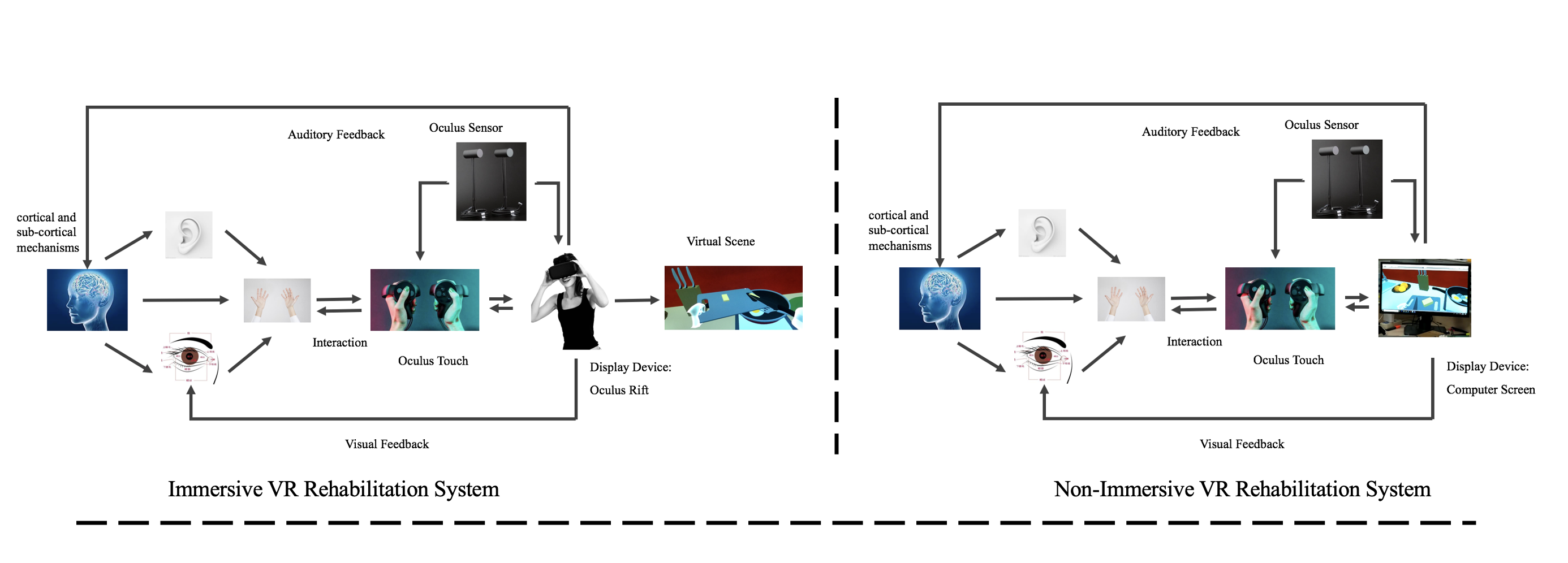Architecture of Immersive Virtual Reality Rehabilitation System
The structure of the immersive virtual reality rehabilitation system is shown in the left. The patient's healthy side and affected side upper limbs simultaneously control the movement of the Oculus Touch handle. Oculus Sensor sensors track and detect the movement of both upper limbs in real time, and the virtual scene in Oculus Rift glasses follows the patient's head movement and body position changes in real time Update, and provide the patient with corresponding vision and audio feedback, so that the patient can clearly know the rehabilitation training task and the movement status of his own upper limbs.
Oculus Rift glasses, Oculus Touch handles and Oculus Sensor sensors are connected and interacted with data via Oculus software, and the real-time data transmission is carried out with virtual scenes through the VR interface of Unity3D and a series of software development kits.
During the experiment, the movement data of both hands, including the movement position, speed and acceleration, can be obtained in real time through the sensors in the Oculus Touch handle, and the user's hand movement status information can be obtained through the program component designed and written in the Unity3D model, facilitating the recording and analysis of subsequent experimental results.




